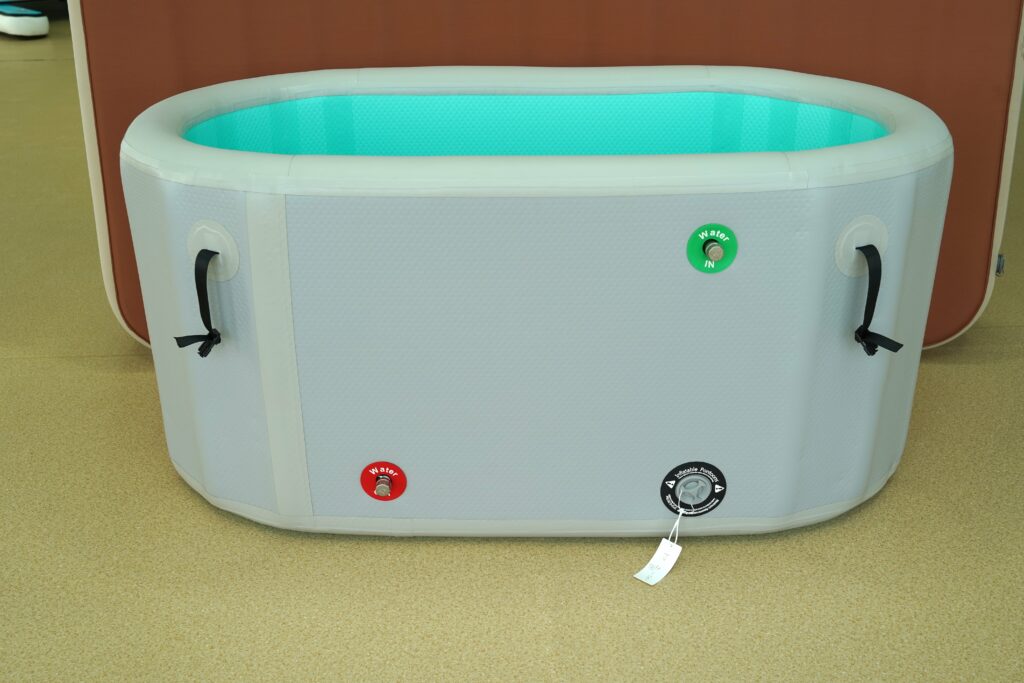Follow this article you will know how to plunge properly. Cold plunge therapy, also known as ice baths or cryotherapy, has gained immense popularity among athletes, fitness enthusiasts, and wellness seekers. From reducing inflammation and promoting muscle recovery to boosting mental resilience, this ancient practice offers a myriad of potential benefits.
Understanding Cold Plunge Therapy
Before we dive into the how-to, let’s briefly explore the science behind cold plunge therapy. When the body is exposed to cold temperatures, it triggers a physiological response known as “cold shock,” which prompts the constriction of blood vessels and a temporary increase in blood pressure. This process is believed to reduce inflammation, alleviate muscle soreness, and promote faster recovery after intense physical activity.
Preparing for Your Cold Plunge
Choosing the Right Cold Plunge Equipment
To ensure a safe and comfortable cold plunge experience, investing in the right equipment is crucial. A high-quality cold plunge tub or cold plunge chiller is essential for maintaining the desired water temperature consistently. Look for durable, insulated tubs or chillers with precise temperature control features to optimize your cold plunge sessions. Options like inflatable cold plunge tubs, stock tank setups, or even a DIY cold plunge barrel can be viable alternatives. It all depends on your cold plunge cost.
Setting the Ideal Temperature
While personal preferences may vary, most experts recommend a water temperature range of 50°F to 59°F (10°C to 15°C) for optimal cold plunge therapy benefits. However, it’s essential to start gradually and allow your body to acclimate to the cold before attempting longer durations or lower temperatures like a 40-36 degrees or 2-minute cold plunge.
Plan your cold plunge frequency
After a workout or exercise session, consider spending 10-15 minutes in a sauna to help relax your muscles, followed by a 3-minute cold plunge. This combination of heat and cold can aid in recovery and reduce inflammation. Aim for a cumulative cold plunge time of around 15 minutes per week, as this is often cited as the optimal duration for experiencing the full benefits and dopamine release. Beyond this point, the effects may start to diminish.
You can schedule these cold plunge sessions according to your weekly routine, perhaps incorporating them on five separate days or even daily if desired. However, it’s crucial to listen to your body and consult with a healthcare professional, especially if you have any underlying medical conditions or concerns. Adjusting the frequency and duration based on your individual needs and responses is essential for a safe and effective cold plunge practice.
The Cold Plunge Process
Step 1: Warm-up and Prepare
Before entering the cold plunge tub, engage in light warm-up exercises or gentle stretching to increase blood flow and prepare your body for the temperature shock. Ensure you have a towel, robe, and any other necessary accessories within reach.
Step 2: Immerse Gradually
Slowly lower yourself into the cold water, starting with your feet and gradually submerging your body up to your waist or chest level. Take deep, controlled breaths and allow your body to adjust to the cold sensation. You can try techniques like the Wim Hof method, cold plunge meditation, or even plunging in cold water during winter for an added challenge.
Step 3: Embrace the Cold
Once you’re fully immersed, focus on your breathing and mental state. Embrace the cold sensation and allow your body to experience the therapeutic benefits. Depending on your tolerance level, aim for an immersion time , or even longer if you’re an experienced cold plunger like Joe Rogan or Andrew Huberman.
Step 4: Exit and Warm Up
After your cold plunge session, slowly exit the tub and immediately wrap yourself in a warm towel or robe. Engage in light stretching or gentle movements to promote blood circulation and gradually warm up your body. You can also try contrast therapy by alternating between hot and cold plunges or saunas.
Safety Considerations
While cold plunge therapy is generally safe for most individuals, it’s essential to exercise caution and listen to your body’s signals. Avoid prolonged exposure if you experience excessive shivering, numbness, or discomfort. Consult with a healthcare professional if you have any underlying medical conditions or concerns before incorporating cold plunge therapy into your routine, especially if you’re sick or have a fever.
Mastering the art of cold plunging can be a transformative experience, offering a multitude of physical and mental benefits. By following the proper techniques, investing in the right equipment, and prioritizing safety, you can unlock the full potential of this ancient practice. Embrace the chill, and embark on a journey towards enhanced recovery, resilience, and overall well-being, whether you’re an athlete, a cold plunge enthusiast, or simply seeking the invigorating effects of cold water immersion.
Additional Resources and Inspiration
Cold Plunge Studios and Facilities
As cold plunge therapy gains popularity, dedicated cold plunge studios and facilities have started emerging in major cities, such as Cold Plunge Studios, Polar Monkeys, and Equinox. These places provide professional guidance and facilities for people to experience the benefits of cold water immersion, often equipped with saunas and recovery lounges.You can also order a chiller and tub to plunge at home.
Influencers and Expert Sharing
Well-known personalities and influencers, like Joe Rogan and Wim Hof, have helped popularize cold plunge therapy by sharing their own experiences and routines. Fitness experts like Andrew Huberman have also shared the science and benefits behind cold immersion.
Cold Plunge Duration and Temperature
Different individuals have varying preferences and practices when it comes to the duration and temperature of cold plunges. Some follow a 2-11 minute immersion in 40-55°F (4-13°C) ice water, while others attempt extended extreme cold exposures, like the Wim Hof method. Temperatures range from slightly chilled to full ice baths.
Overall, more and more people are embracing cold plunge therapy, whether for athletic recovery, pain relief, or overall physical and mental well-being. The key is to properly understand and manage the duration, temperature, and breathing techniques according to individual circumstances, maximizing the benefits while ensuring safety.






